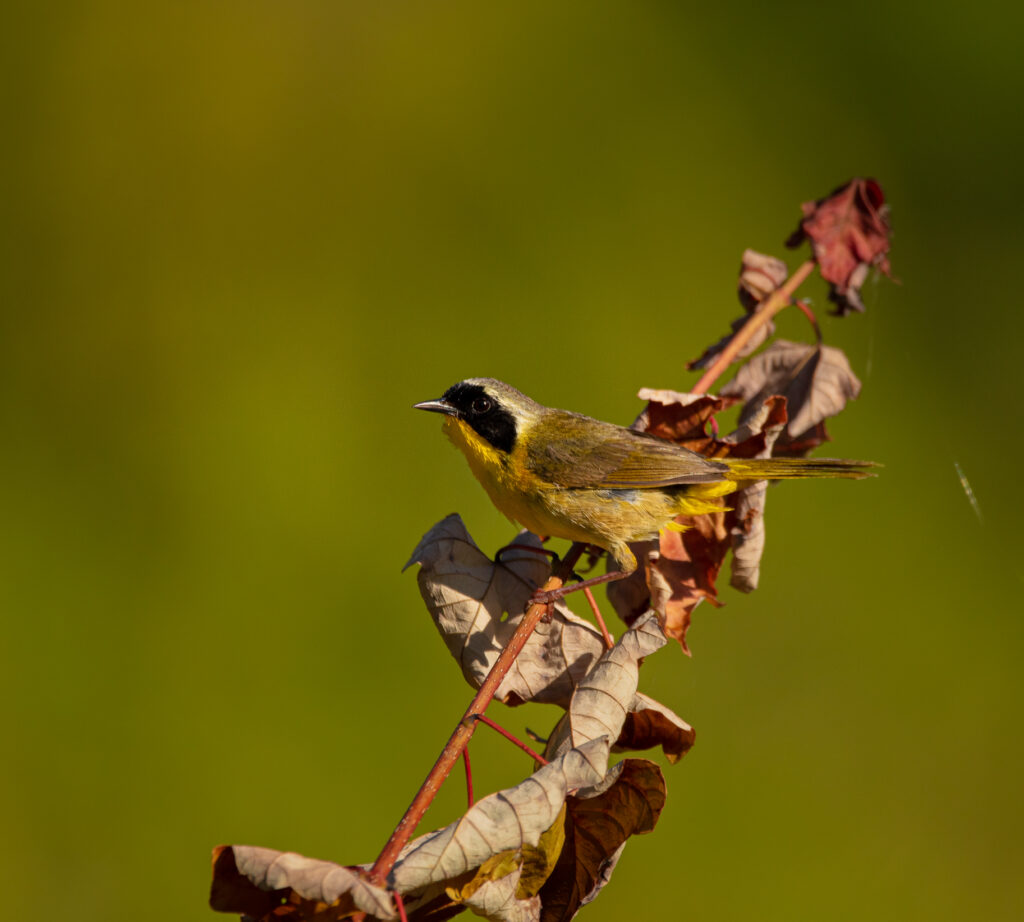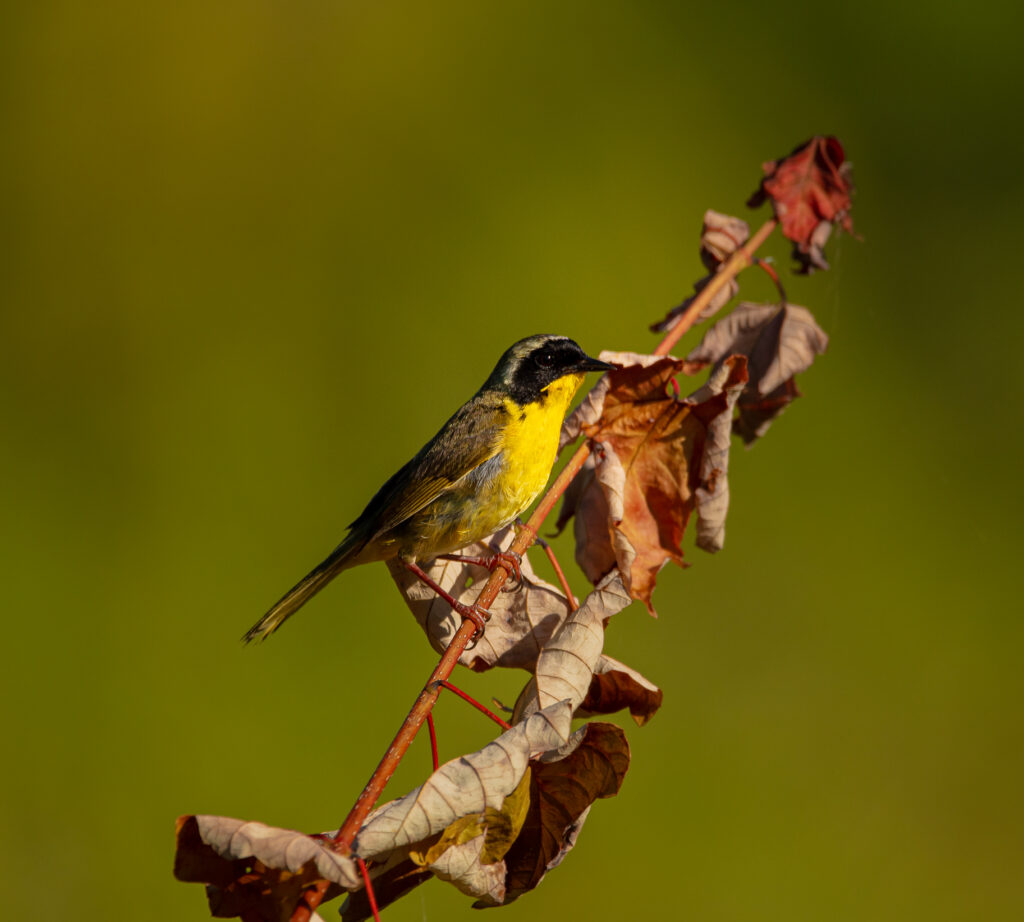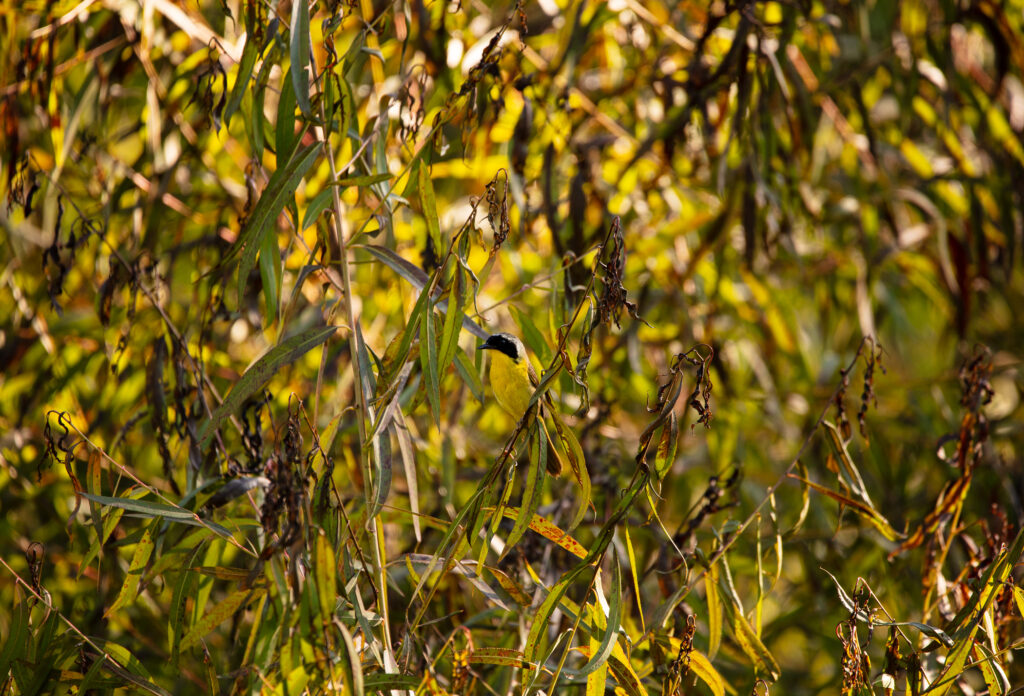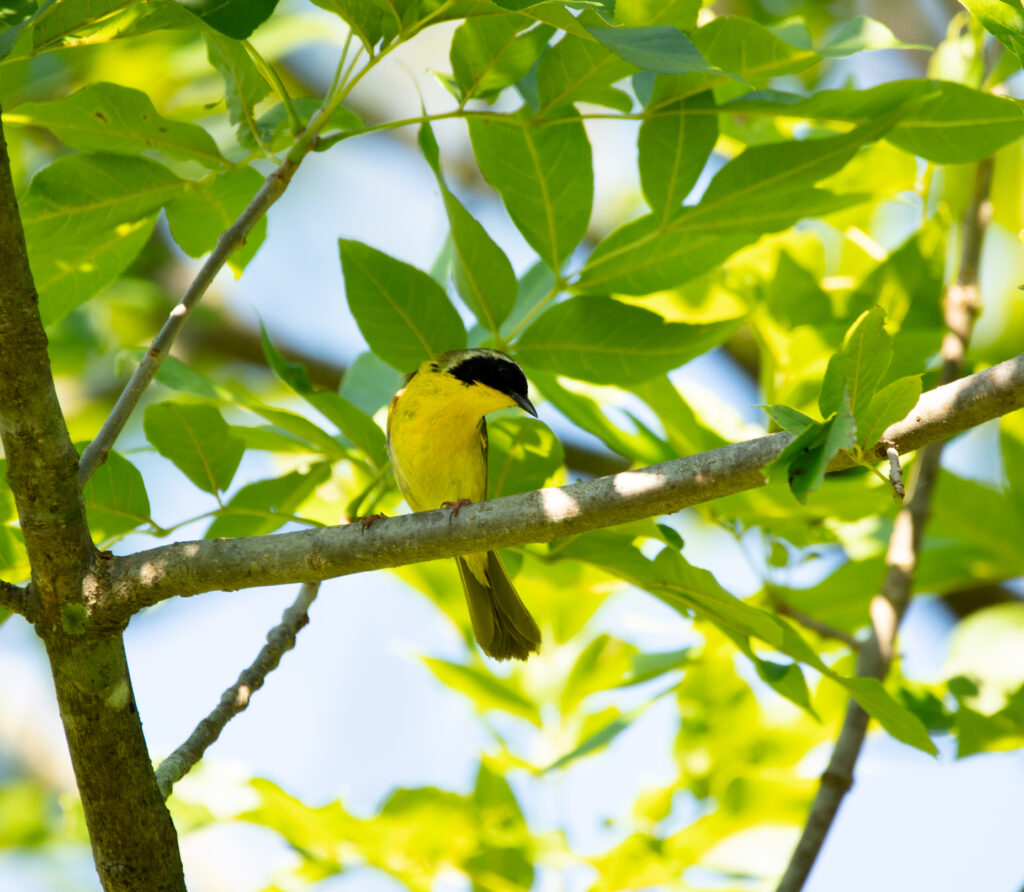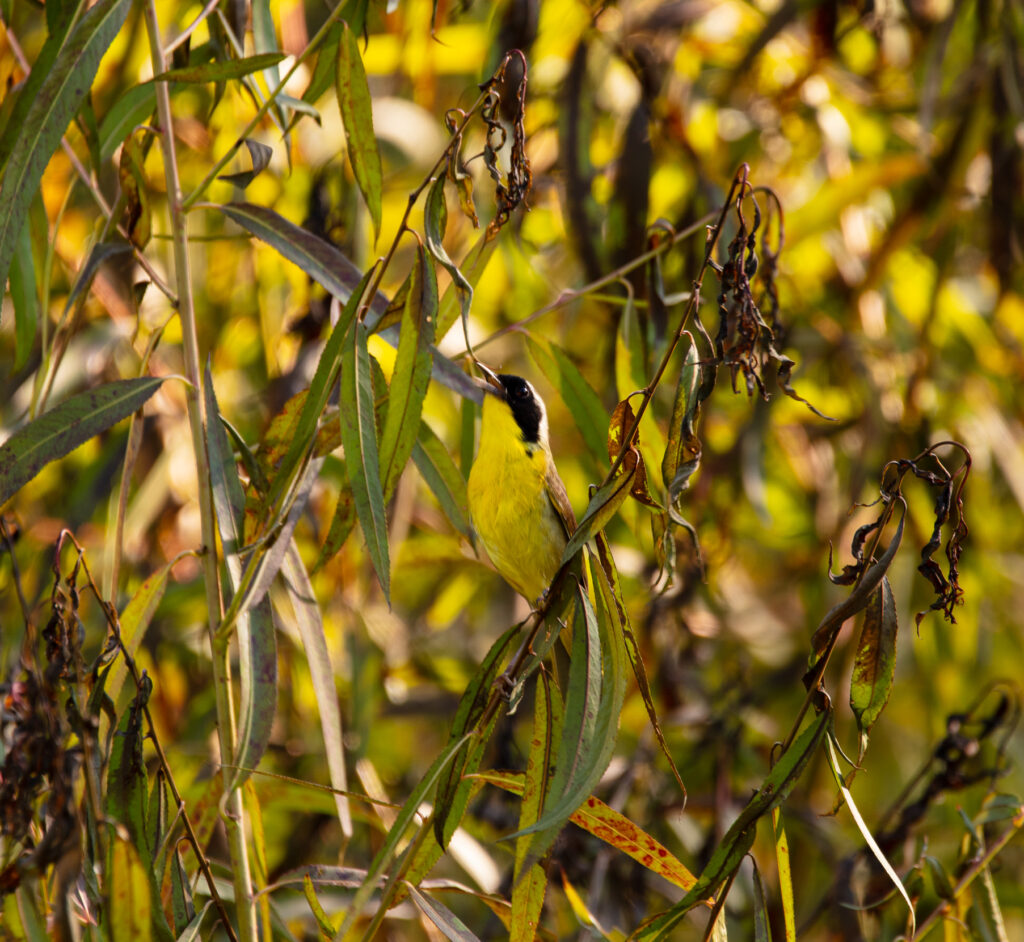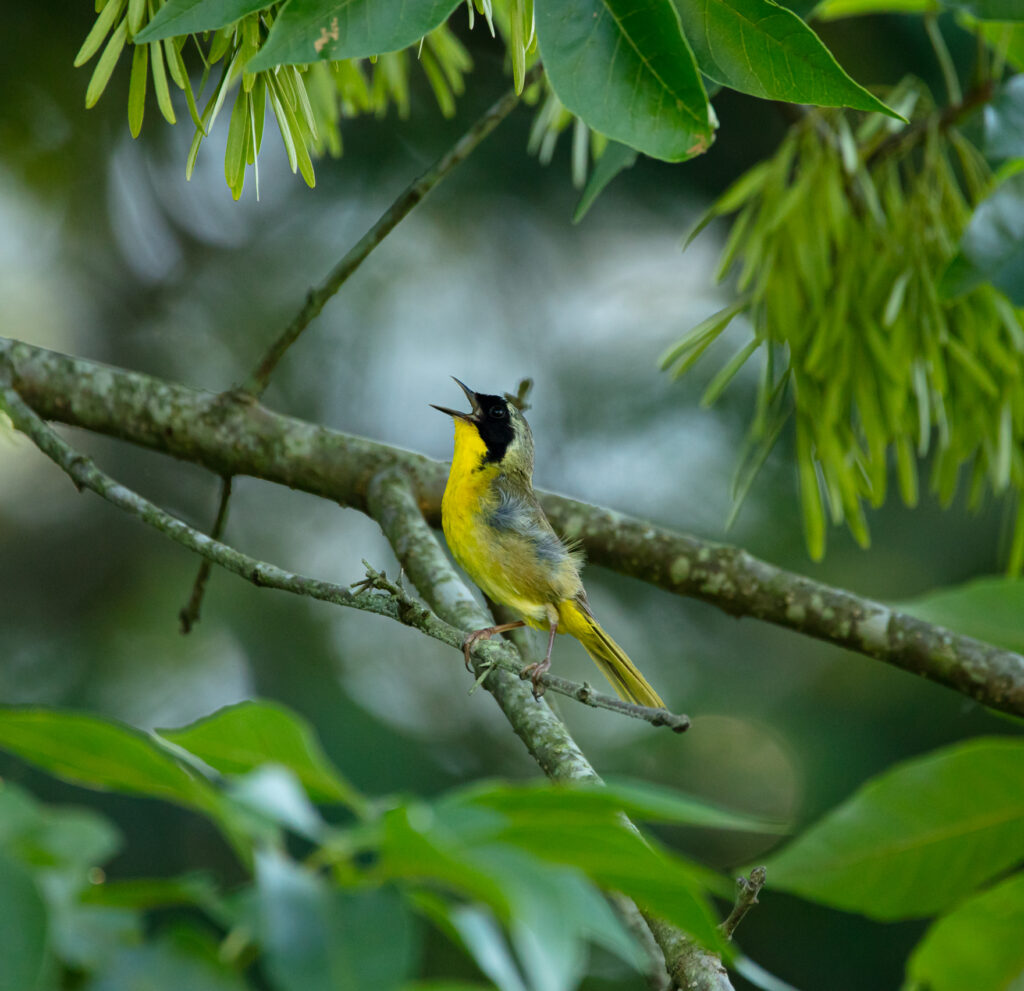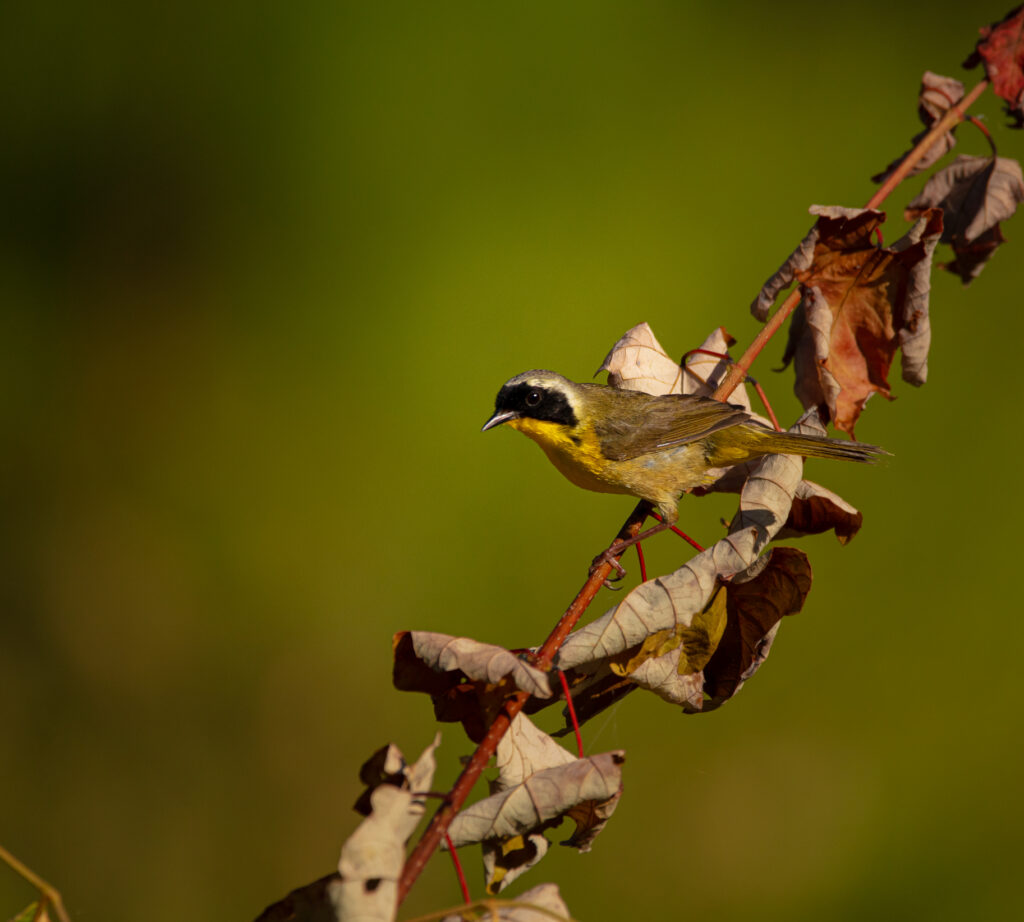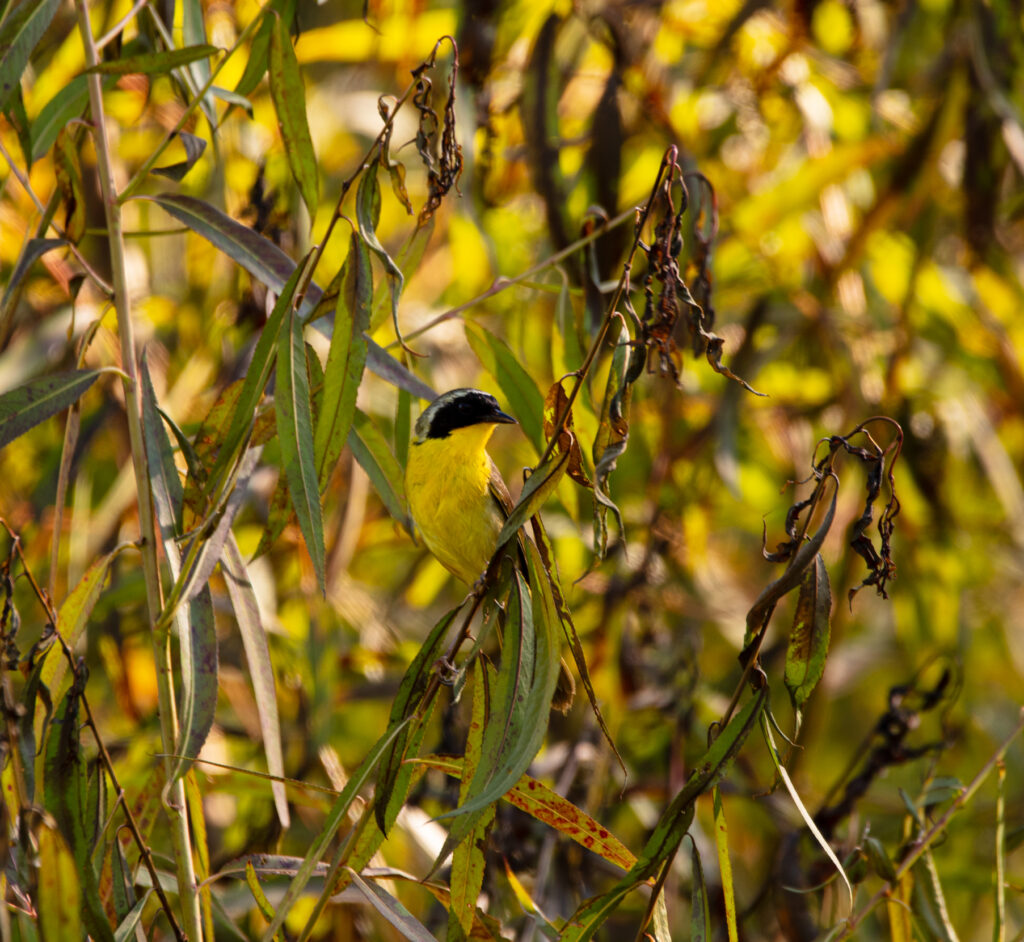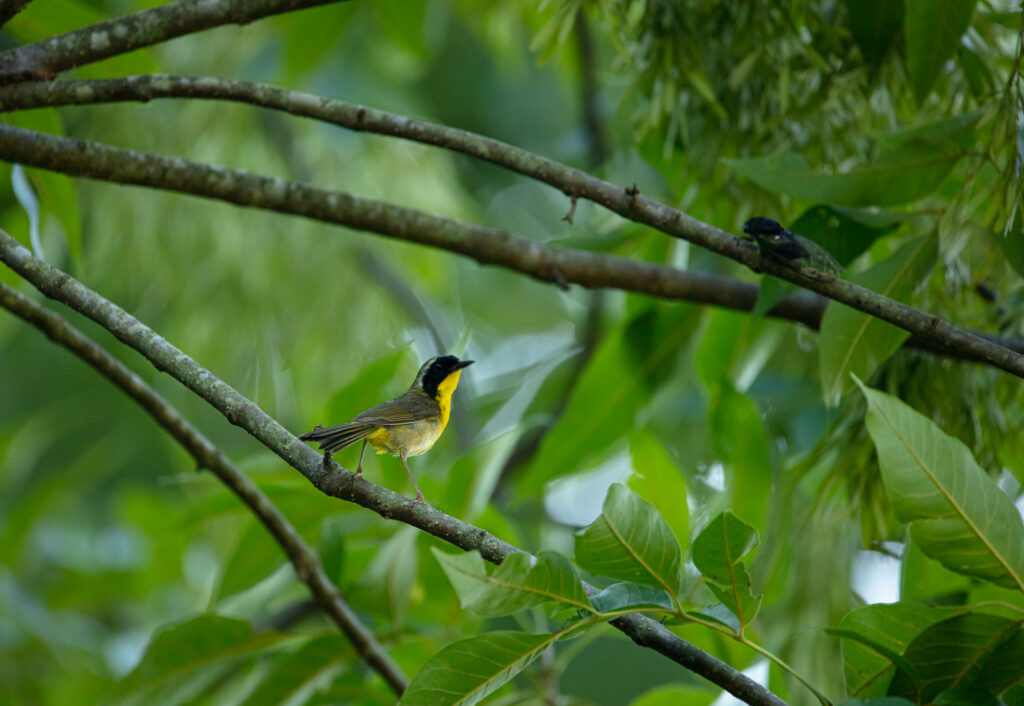Last weekend I hosted a birding tour at Harris Lake Park in New Hill NC. I’d visited there a few days beforehand and had spotted a Yellow-throated Warbler hopping around high up in the trees.
Unfortunately that one was just far enough away enough that I couldn’t get any decent photos.
I was hoping that I’d have the opportunity to show him to my guests on the second trip and lo and behold we got lucky to see this handsome little guy up close.
Yellow-throated Warblers are striking looking birds with that bold yellow throat paired with black and white plumage. Definitely easy to ID once you know what to look for 😉
This one was all floofed out while preening on a branch in the sunshine before flying down to a brush pile to search for breakfast.

Yellow-throated Warblers are usually found in North Carolina from late March through September however some do spend the wintertime here which is pretty neat.
During the breeding season, Yellow-throated Warblers may be seen in wet forested areas like swamps, marshes and foraging in the brush along the shorelines of ponds, streams and lakes. The habitat of Harris Lake Park is just perfect for them!

When winter arrives, most migrate to the Florida, the Caribbean islands and along the Gulf Coast in Mexico to Costa Rica.
That being said, a few of them just make a short trip to the southeastern most part of NC to spend the cooler months.
From September through February, a few Yellow-throated Warblers are best spotted in our far southern coastal forests looking for a meal in mature pine-hardwood stands.
Luckily many have already returned to the Tarheel state this spring to kick off the breeding season so we’ve got plenty of time to enjoy them throughout the summer 🙂
Photos by @sally_siko of @birdwatching_nc on the full frame beast of an SLR, the mighty @canonusa
#5Ds

